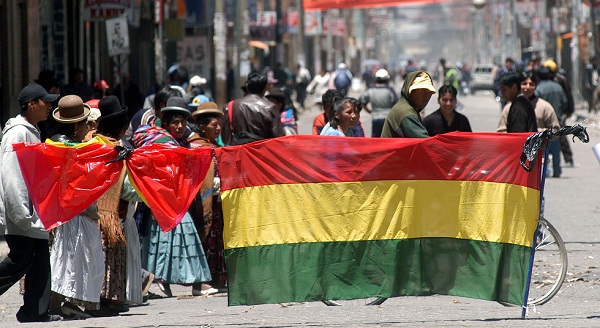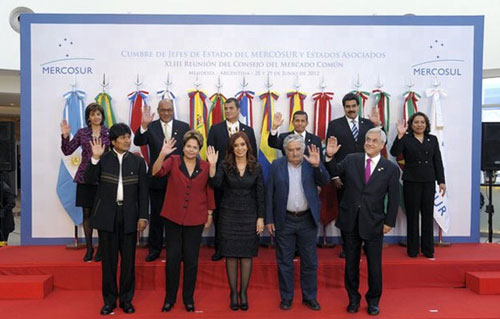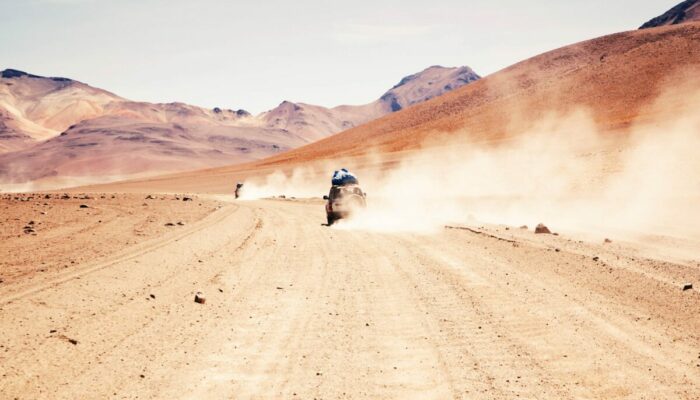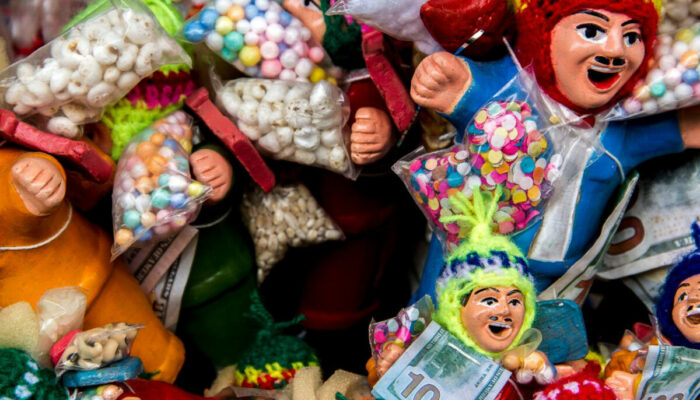On this day, 18 years ago, the city of La Paz was under siege. For more than a week, the inhabitants of El Alto, the sprawling suburb of La Paz, blocked all access to the city. It was on 17 October that this dark page in Bolivian history, known as the “Gas War”, came to an end. On 17 October 2003, President Gonzalo Sanchez de Lozada, known in Bolivia as Goni, fled the country for the United States after being accused of a massacre by his own vice-president.
A turning point in history
That day, and especially Goni’s flight, marked an exceptional 180-degree turn in Bolivian political history, and would affect Bolivia forever. The big winner of the protests and the President’s flight was Evo Morales, who went on to become President of the Republic. Felipe Quispe, another leading figure in the indigenous movements, also made a name for himself during the crisis, leading the social movement and blockading the city of La Paz. His radical views, in contrast to the more moderate Evo Morales, were to leave their mark on Bolivian politics over the next 2 decades.
Favouring major foreign oil companies
The gas war and social unrest began in early 2003, in response to the government’s decision to export Bolivian gas. In 2000, under the presidency of Hugo Banzer, Bolivia’s private oil companies had discovered the second largest natural gas deposit in South America in the Gran Chaco region. But a number of dilemmas quickly divided the Bolivian people and politicians on the issue. A majority of the Bolivian people are opposed to exporting the gas through a pipeline that would cross Chile and then be exported by ship to the United States. Bolivia and its neighbour have been irreconcilable since the War of the Pacific (1879-1884), and the Antofagasta region, which was Bolivian at the time, is still claimed by Bolivia and regarded as stolen land. The majority of the Bolivian people were initially in favour of exporting the oil via Peru, then later in favour of refining it locally. They opposed the oil companies, for whom exporting it via Chile was financially more advantageous, but did not take into account either the Bolivian people or the historical differences between the two countries.
Goni, an unpopular president since his election
President Goni was sworn in in 2002 in a tense climate. He took over from Quiroga, who had postponed the decision on gas exports and who had himself succeeded Hugo Banzer, who was seriously ill, in 2001. Gonzalo Sanchez de Lozada set things alight, taking the decision to choose the Chilean option, which was quickly perceived as a betrayal. He was accused of favouring private foreign companies, but also of favouring an enemy country.
A state of siege in La Paz
After several months of protests, the uprising took on unprecedented proportions in October 2003, when several groups, trade unions and various political movements decided to blockade the city of La Paz. For several days, the inhabitants of El Alto, led by Felipe Quispe and a certain Evo Morales, blocked all access to La Paz, forcing the city’s inhabitants to ration their food. On 12 October, the army attacked the roadblocks, leading to a massacre of the Bolivian people, with around 70 deaths in October 2003 alone. President Goni was accused of murder even within his own political family. He resigned and fled the country, and is still on the run in the United States.
A pink wave across Latin America
This was followed in a few years’ time by a referendum on the nationalisation of hydrocarbons, which was widely accepted by the population, and finally, in 2005, the election of President Evo Morales, the first president in Bolivian history to claim to be indigenous and of Aymara culture. This was an important turning point in the history of Bolivia and South America. Morales was one of many heads of state in the Latin American “pink wave”, which left a strong mark on the continent’s politics from the early 2000s and continues to this day in some countries, with the heads of state Chavez in Venezuela, Ortega in Nicaragua, Humala in Peru, Correa in Ecuador, Mujica in Uruguay, as well as Lula in Brazil and Bachelet in Chile. This also marks the appearance of indigenous presidents on the Latin American political scene. In Peru, 45% of the population is considered to be of indigenous origin, while in Bolivia the figure is 40%. However, Ollanta Humala, elected in 2011, and Evo Morales, in 2005, are both considered to be the first to claim to be indigenous.
Morales in history
Morales will hold the presidency for 13 years, until 2019. His party, the Movement Towards Socialism (MAS), is still in power, represented by the economist and former minister Luis Arce. Although he is a very divisive figure, he is very popular on the altiplano and in the valleys, and in the big cities of La Paz, El Alto and Cochabamba, where the majority of the indigenous Aymara and Quechua populations live, but he is very unpopular in the Amazon regions and the great plains of the east. Bolivia, which was the poorest country in South America before he took office, has made great strides economically. Reforms and nationalisations have benefited the most disadvantaged sections of the population, poverty has fallen sharply (it is estimated to have been halved), inequality has fallen, illiteracy has disappeared, indigenous populations are now considered, their languages are now national languages and taught, and their cultures are respected. However, it remains criticised for its sometimes authoritarian management and its lack of action against global warming. Whatever may be said, he transformed his country forever and will go down in the political history of South America.











